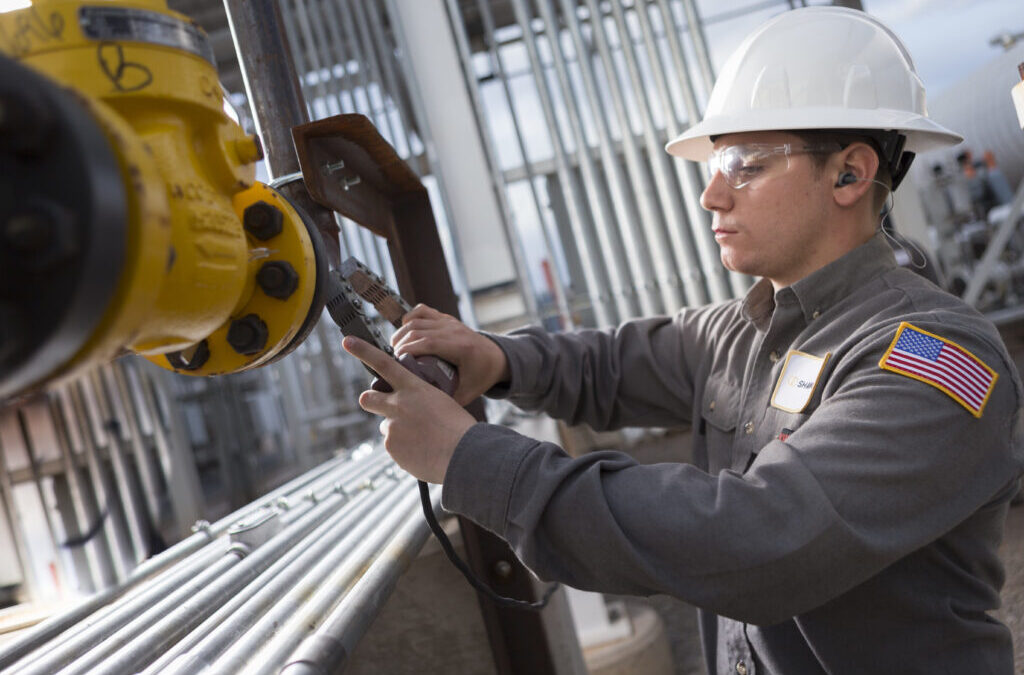In the realm of non-destructive testing (NDT), ultrasonic testing (UT) stands out as a crucial technique for evaluating the properties of materials and structures. One of the critical aspects of ultrasonic testing is understanding the typical frequency range used during the testing process. This article delves into what the typical frequency range in ultrasonic testing is, why it matters, and how it is applied in various industries.

What is Ultrasonic Testing?
Ultrasonic testing is a technique that employs high-frequency sound waves to detect imperfections or changes in properties within a material. This method is widely used because it is non-invasive and can provide detailed insights into the integrity of the tested object without damaging it.
Importance of Frequency in Ultrasonic Testing
The frequency of the sound waves is a vital component of ultrasonic testing. Frequencies in ultrasonic testing typically range from 500 kHz to 20 MHz. This range is selected based on the requirements of the test, the type of material being tested, and the level of detail needed.
Lower Frequency Applications
Lower frequencies, such as those below 1 MHz, are often used for thicker materials or when a deeper penetration is necessary. For example, in industries where the integrity of large structures needs to be assessed, lower frequencies provide a better penetration depth.
Higher Frequency Applications
Higher frequencies, such as those above 10 MHz, are used for detecting smaller imperfections in thinner materials. These frequencies are ideal for applications requiring high resolution and precision, such as in the aerospace and automotive industries.
How Frequency Affects Testing Outcomes
The frequency chosen for a test can significantly affect the resolution and penetration of the ultrasonic waves. Higher frequencies offer better resolution but lower penetration, while lower frequencies provide deeper penetration but less resolution.
Resolution vs. Penetration
The trade-off between resolution and penetration is a critical consideration for technicians. Understanding this balance helps in selecting the appropriate frequency for specific testing needs.
Industry Applications of Ultrasonic Testing
Industries such as aerospace, automotive, and construction rely heavily on ultrasonic testing to ensure the safety and integrity of materials and components. Each industry has specific requirements that dictate the frequency range used.
Aerospace Industry
In the aerospace industry, the precision provided by high-frequency ultrasonic testing is essential for detecting minute flaws in critical components. This ensures the safety and reliability of aircraft.
Automotive Industry
For the automotive industry, ultrasonic testing is used to inspect welds and joints. The selection of frequency depends on the thickness and material of the parts being tested.
Construction Industry
In construction, ultrasonic testing helps in assessing the integrity of concrete structures. Lower frequencies are often used to penetrate deep into the material.
Technological Advancements in Ultrasonic Testing
Advancements in technology have enhanced the capabilities of ultrasonic testing. Modern equipment allows for more precise control over the frequency range, improving the quality of test results.
Digital Signal Processing
Digital signal processing has revolutionized how ultrasonic signals are interpreted, providing clearer and more accurate data.
Automated Testing Systems
Automated systems now allow for continuous monitoring and testing, making the process more efficient and reducing human error.
Choosing the Right Frequency
Choosing the appropriate frequency for a test is crucial and depends on the specific requirements of the application. Factors such as material type, thickness, and the level of detail required must be considered.
Material Considerations
The type of material being tested greatly influences the frequency choice. Metals, plastics, and composites each have different acoustic properties.
Thickness and Detail
Thicker materials require lower frequencies for adequate penetration, while thinner materials can be tested with higher frequencies for more detail.
Conclusion
Understanding the typical frequency range in ultrasonic testing is essential for conducting effective assessments. By selecting the right frequency, technicians can ensure the accuracy and reliability of test results, ultimately contributing to the safety and integrity of the structures and components being evaluated.

FAQs
What is the typical frequency range used in ultrasonic testing?
The typical frequency range in ultrasonic testing is from 500 kHz to 20 MHz.
Why is frequency important in ultrasonic testing?
Frequency determines the resolution and penetration of the ultrasonic waves, affecting the accuracy of the test results.
How do industries choose the right frequency for testing?
Industries choose the frequency based on the material type, thickness, and the level of detail required for the test.
For further reading on equipment inspection frequencies, you can visit Aviva Risk Solutions.
Additionally, our articles on HVAC Optimization and Anomaly Alerts provide insights into similar technologies.
This article contains affiliate links. We may earn a commission at no extra cost to you.
